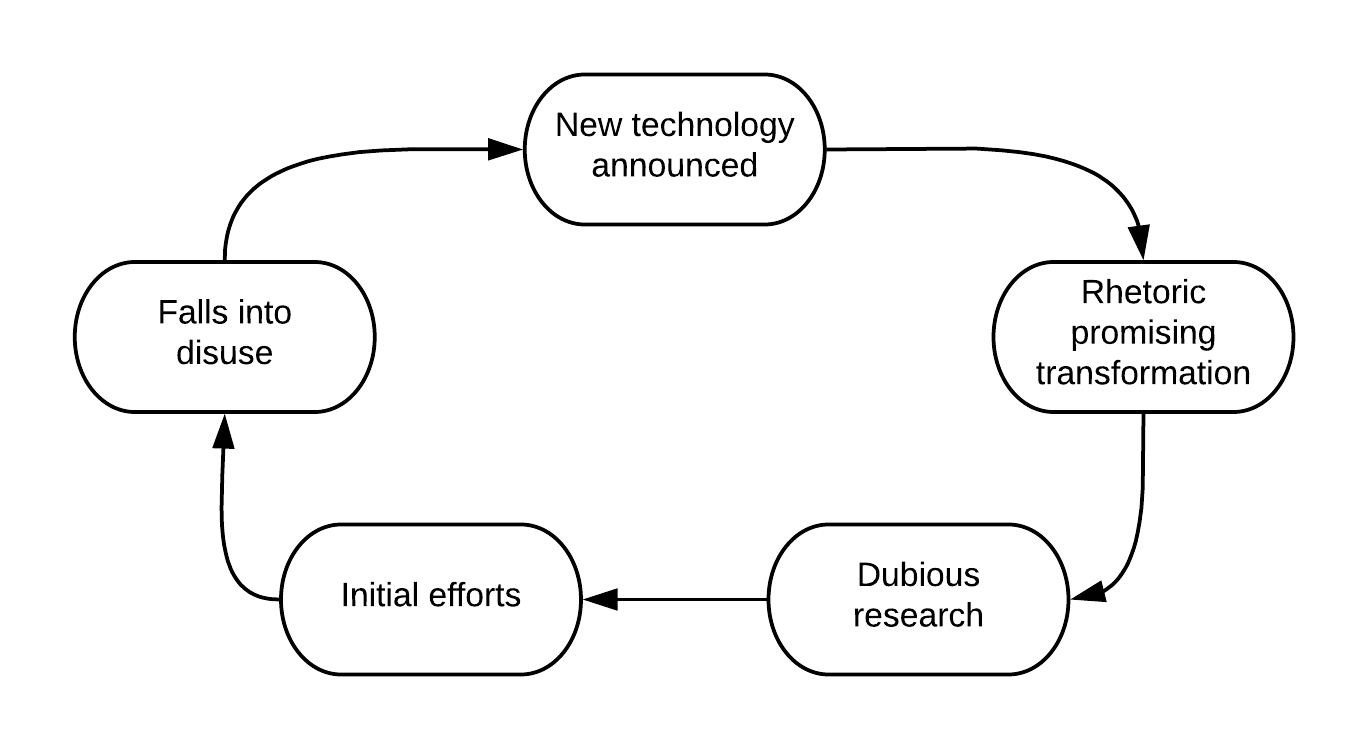The computer technologies introduced to schools in the last quarter of the 20th century were part of a long parade of electronic information technologies that were introduced first into the popular culture and then into education throughout the 20th century. In 1986, Larry Cuban, a professor of education at Stanford University, reviewed the history of radio, movies, and television and he observed a common pattern describing how the technologies failed to transform education as predicted and eventually fell into disuse in schools. First, advocates argued that each technology could be used to make teaching more efficient and more effective. Second, dubious research (frequently supported by the manufacturers of the technologies) was used to support the advocates’ claims. Third, the technologies were introduced to schools, but soon fell into disuse. Finally, the next technology with promise to transform teaching was introduced and the pattern was repeated.

Cuban identified several reasons for this pattern. First, limited access to the technology posed an obstacle to its use. The expense of obtaining equipment, the need for expertise to maintain and operate the equipment, and the inflexibility of schedules were all factors that limited teachers’ access to electronic information technologies throughout the 20th century. Access was also limited by teachers’ inability to operate the equipment, and inadequate training exacerbated this factor. Second, a lack of curriculum materials dissuaded teachers from using these technologies; because other resources were available that were better-aligned with their curriculum and with their previous teaching experiences, many educators avoided the new technologies preferring to use the safe, familiar, and reliable materials which they knew. Finally, many decisions to introduce these technologies to classrooms were made by leaders who had little understanding of the logistical challenges that inadequate access and training and weak curriculum materials posed for teachers.
A few years ago, I suggested school and technology leaders had taken Cuban’s lesson to heart and had taken steps to interrupt this cycle:
When introducing computers to classrooms, school and technology leaders appear to have paid attention to the lessons learned by the failure of radio, movies, and television to deliver the promised effect on teaching. There have been systemic efforts to ensure all schools have the resources to install computers and connect them to the Internet; there have been efforts to develop resources to support curriculum planning, and there have been efforts to provide educators with on-going professional development. While they added computer processing power and memory, broadband Internet connections, and useful software to their schools, school and technology leaders also hired professionals to manage ICT systems and others to work with teachers to support ICT-based curriculum and instruction. Today, it is not unusual to find schools employing computer technicians, network administrators, and technology coordinators in addition to technology integration specialists and technology teachers.
I am less optimistic that school and technology leaders have actually made these changes, however. Schools are indeed connected to the Internet and students have devices in front of them. The curriculum is unchanged because of the technology, however. In many cases, the curriculum is more deeply embedded than ever, and the traditional lessons and the traditional pedagogy are now delivered via digital devices. The technology experts who arrive in schools are largely immigrants from business and industry who understand technology, but not the users of technology in schools
References
Cuban, Larry. 1986. Teachers and Machines: The Classroom Use of Technology since 1920. New York: Teachers College Press.